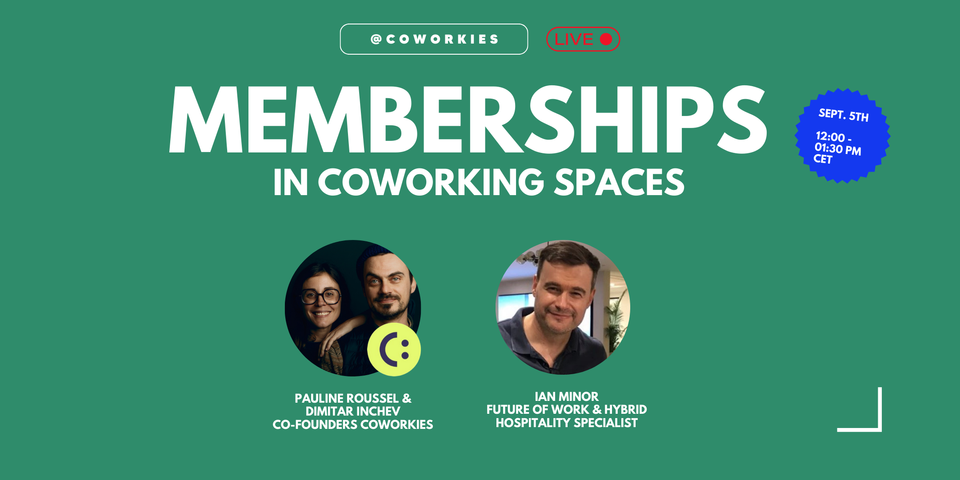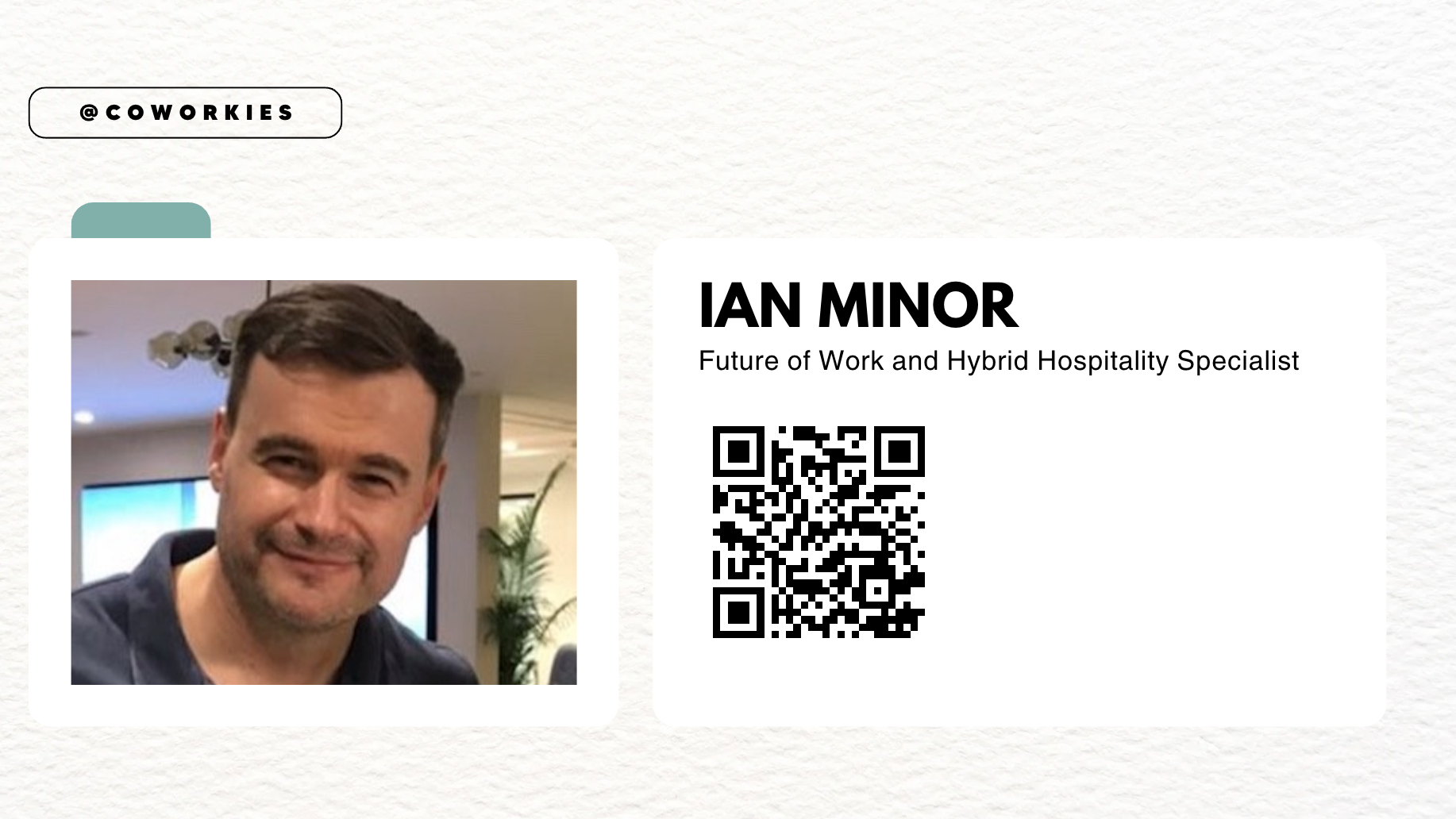Memberships in Coworking Spaces Coworkies Readers’ Club Online Event Key Takeaways + Access To Video Replays

This article offers a concise summary of the recent online event hosted by the Coworkies Readers’ Club, focusing on Memberships in Coworking Spaces. It explores key considerations for creating a compelling membership model, from understanding member needs to designing flexible, value-driven tiers. The discussion also highlights the importance of member engagement, especially in the crucial early months, and shares insights on avoiding common pitfalls when structuring memberships to ensure long-term retention and community building.
In early September, the Coworkies Readers' Club shifted focus from operations to a crucial but often underestimated element of coworking spaces: memberships. As flexible work continues to redefine how we think about the office, the structure and philosophy behind memberships are becoming essential to a coworking brand's long-term success.
Why spotlight memberships now? Having visited over 550 coworking spaces across 60+ cities, from the creative quarters of Berlin to the corporate towers of New York, one insight stands clear: a well-crafted membership is not just a pricing plan—it’s the architecture of community. Memberships reflect the ethos of your space, shaping how people connect, collaborate, and ultimately, belong. In a landscape where workers are increasingly mobile, the decision to join a coworking space hinges less on a desk and more on the culture and experience that membership entails.
Membership models are, at their best, living frameworks. They adapt to the needs of diverse members, offering more than just physical access—they provide a sense of identity, opportunity, and flexibility. However, designing these frameworks is complex. Too many options create confusion, while rigid structures stifle the very freedom coworking is meant to offer. Understanding how to strike the right balance between flexibility and stability is where many coworking operators either find success or falter. The key challenge is ensuring your membership tiers align with both your brand’s objectives and the evolving demands of your community.
During our recent event, we explored this delicate balancing act. Through discussions with industry experts like Ian Minor, who has shaped membership strategies for leading coworking brands, we dug into the practicalities of creating memberships that not only attract but retain members in the long term. From identifying the first three months as the most critical window for engagement to learning why discounting can erode your brand’s value, the insights shared offer a roadmap for coworking operators who want to move beyond just selling space—to building a thriving, engaged membership base.
If you missed the event, this recap offers an in-depth look at the strategies and best practices shared by our speakers, with actionable advice for refining your membership model. Whether you're looking to overhaul your approach or refine an existing structure, this guide aims to equip you with the tools to create memberships that foster loyalty, elevate your coworking brand, and build lasting connections within your community.
Memberships in Coworking Spaces, What Are We Talking About in 2024?

In 2024, coworking memberships are no longer just about securing a desk—they’ve become a passport to curated environments that blend work, community, and culture. As the boundaries between professional and personal spaces blur, memberships offer more than access—they unlock experiences. From flexible solutions for freelancers to tailored offices for established brands, the role of memberships is now pivotal in shaping coworking’s identity. We uncover five key strategies and common missteps for coworking operators navigating this new landscape, ensuring that their spaces resonate with the shifting needs of today’s workforce.
5 Takeaways on Memberships in Coworking Spaces
- Why Are Memberships in Coworking Spaces Important? Memberships are the backbone of coworking spaces, serving as the primary revenue stream. However, beyond just revenue, they shape the community, experience, and identity of the space. Each membership tier—from Flex Desk to Private Offices—caters to different needs, offering flexibility, opportunities, and a professional image.
- Understanding Memberships Beyond Fees
While a membership can simply be viewed as a fee for access to a desk or office, it is more than that. Memberships symbolize access to flexibility, opportunities, and professional environments. They offer freelancers, remote workers, and companies an experience that goes beyond just physical space. - The Common Types of Memberships
Membership language often includes:
- Flex Desk (Hot Desk): Offers the most flexibility, with members working in open spaces, without a dedicated spot.
- Fixed Desk (Dedicated Desk): Allows for more permanence and personalization, with members having their own desks within shared areas.
- Private Offices: Suited for teams or larger businesses requiring privacy, customization, and full access to the coworking space's amenities.
In addition, innovative membership models like pay-as-you-go, night-owl memberships, and community memberships (which focus on access to programming rather than physical space) are on the rise.
- Designing Memberships to Match Community and Experience
The type of membership directly impacts the coworking space’s community and experience. Operators need to strike a balance between offering flexibility and maintaining stability, considering the diversity of their members’ needs. - Key Steps to Designing Effective Memberships
- Understand Your Audience: Analyze your target market, their needs, and pricing points.
- Define Your Core Offerings: Structure memberships based on your layout and service capabilities.
- Build a Pricing Strategy: Use local market research and data to determine pricing that aligns with your positioning and covers operational costs.
- Communicate, Monitor, and Refine: Consistently review feedback, monitor market trends, and be willing to adjust memberships over time.
3 Common Mistakes in Membership Strategy
Many coworking spaces overcomplicate their membership offerings. It’s essential to streamline options to avoid overwhelming potential members. Aim for three to four tiers that reflect your space’s core services.
Some operators fail to analyze local market trends regularly. Understanding where your pricing stands in comparison to others in the city is critical. Without this, you may underprice your services and attract members for the wrong reasons.
Membership structures should evolve with both the market and member feedback. If your tiers aren’t performing, don’t hesitate to experiment with new models.

Are you encountering challenges with memberships in your coworking space?
We are here to help! Book a call with us and discover how our coworking consulting services could help you.
BOOK A CALL HEREHow to Build a Membership Strategy for Your Coworking Space?
A conversation with Ian Minor, Future of Work & hybrid hospitality specialist

"The first three months of someone’s membership is going to be the most crucial time for them to stay as a member."
Ian Minor, a seasoned consultant, and former Director of Coworking at Ennismore’s Working From_, offers a clear-eyed look at how thoughtful membership models can transform coworking spaces. With experience at brands like NeueHouse and The Hoxton, Minor focuses on building environments that are more than just desks—they’re communities where engagement and experience are front and center.
Key Takeaways: Membership Models that Transcend Space
1. Memberships Are ExperiencesFor Minor, memberships are more than desk rentals—they’re dynamic experiences that must evolve with member needs. The art of selling memberships lies in crafting a personalized journey for potential members, starting with a detailed needs analysis. Rather than overwhelming prospects with too many options, he advocates for a streamlined membership structure that speaks directly to their desires, from flexibility to professional growth.
2. Pricing with Purpose—Never DiscountMinor’s golden rule: never discount. "Discounting devalues your product," he asserts. Instead, set the right price from the start and emphasize value through premium service and community engagement. This approach not only reinforces the brand but also builds trust and loyalty among members who feel they’re receiving a consistent, quality-driven experience.
3. Engagement: The First Three Months Are Everything
"Member retention begins the moment they sign up," Minor says. He stresses the importance of high engagement within the first three months, a period he identifies as crucial for solidifying commitment. Through curated onboarding experiences, events, and personalized touchpoints, spaces can foster deep connections, turning new members into long-term advocates.
3 Questions for Coworking Operators to Reflect On
1. Are you simplifying or complicating the membership experience? |
As Minor highlights, fewer options lead to better decisions. Evaluate whether your membership tiers are clear and catered to different user needs without overwhelming them.
2. How are you adding value without compromising price integrity? Consider how your space can elevate the member experience through personalization and community, without the need to discount. Focus on consistent value over short-term sales tactics.
3. How engaged are your members within the first three months?
Think about how you onboard new members. Are you creating moments of engagement early on, ensuring they feel part of your community right from the start?




